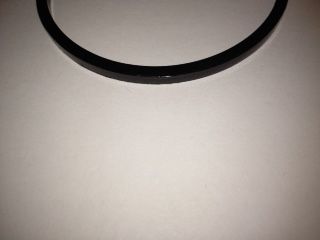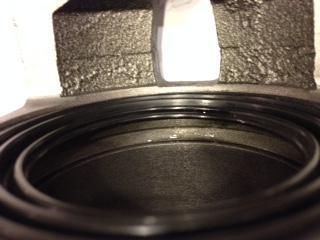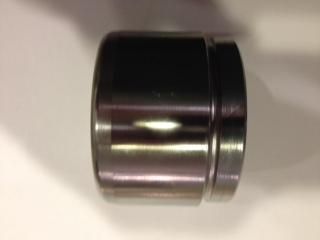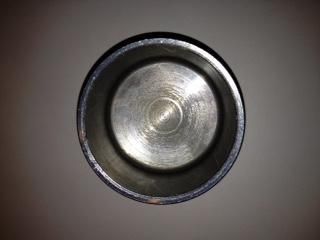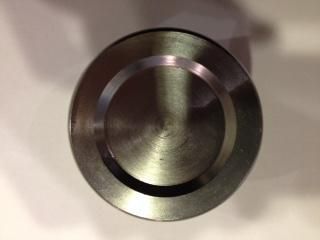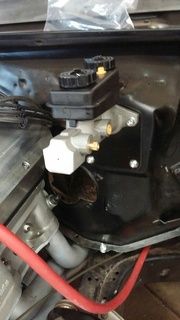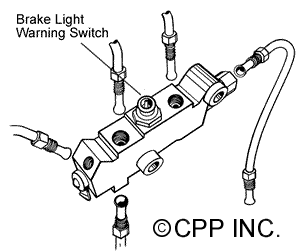Below is an analysis using the Brake Torque Calculator found on Pro-Touring.com. This calculator will give you an idea of what brake torque is for a certain front and rear setups. I am just going to show the changes from the stock front g-body brake system and compare them to a Blazer dual piston brake swap, a stock LS1 Camaro brake swap, a LS1 Camaro brake swap with Corvette calipers
Page 7, Post #140
http://www.pro-touring.com/threads/...featuring-Ron-Sutton-and-Tobin-of-KORE3/page7
This entire post is a really good read if you are interested about brakes.
Here are the inputs that are the same for ALL different types of brake systems shown below.
• 6 to 1 pedal ratio
• 26” tall tire
• 100 ft/lb pedal pressure
• Manual Brakes – NO POWER ASSIST
• Pad Coefficient of Friction - .45
• Use of stock type (tandem) master cylinder
____________________________________________________
Stock G-body/S10/3rd Generation F-body Front Brake System
• Rotor Diameter – 10.5”
• 7/8” Bore Master Cylinder Area - .601 sq-in
• Line Pressure – 998 psi
• Front Caliper Piston Area – 4.909 sq-in
• Front Clamping Pressure – 4899 pounds
•
Front Rotor Torque – 964 ft/lb
• Tire Forces – 890 lb
____________________________________________________
Stock LS1 Camaro/Firebird Front Brake System
• Rotor Diameter – 12”
• 7/8” Bore Master Cylinder Area - .601 sq-in
• Line Pressure – 998 psi
• Front Caliper Piston Area – 4.931 sq-in
• Front Clamping Pressure – 4921 pounds
•
Front Rotor Torque – 1107 ft/lb
• Tire Forces – 1022 lb
____________________________________________________
Stock LS1 Camaro/Firebird Front Brake System with Corvette Calipers with 7/8” bore master cylinder
• Rotor Diameter – 12”
• 7/8” Bore Master Cylinder Area - .601 sq-in
• Line Pressure – 998 psi
• Front Caliper Piston Area – 3.994 sq-in
• Front Clamping Pressure – 3986 pounds
•
Front Rotor Torque – 897 ft/lb
• Tire Forces – 828 lb
Stock LS1 Camaro/Firebird Front Brake System with Corvette Calipers with 21mm bore master cylinder
• Rotor Diameter – 12”
• 21mm Bore Master Cylinder Area - .537 sq-in
• Line Pressure – 1117 psi
• Front Caliper Piston Area – 3.994 sq-in
• Front Clamping Pressure – 4461 pounds
•
Front Rotor Torque – 1004 ft/lb
• Tire Forces – 927 lb
____________________________________________________
Stock Blazer Twin Piston Front Brake System
NOTE: The Blazer twin piston front calipers have a piston area too large to run a .875” bore master cylinder. These calculations are using a 24mm bore master cylinder.
• Rotor Diameter – 10.75”
• 24mm Bore Master Cylinder Area - .701 sq-in
• Line Pressure – 856 psi
• Front Caliper Piston Area – 5.152 sq-in
• Front Clamping Pressure – 4410 pounds
•
Front Rotor Torque – 889 ft/lb
• Tire Forces – 821 lb
Stock Blazer Twin Piston Front Brake System
NOTE: The Blazer twin piston front calipers have a piston area too large to run a .875” bore master cylinder. But to show the differences between the systems, these calculations are using a .875” bore master cylinder.
• Rotor Diameter – 10.75”
• 7/8” Bore Master Cylinder Area - .601 sq-in
• Line Pressure – 998 psi
• Front Caliper Piston Area – 5.152 sq-in
• Front Clamping Pressure – 5142 pounds
•
Front Rotor Torque – 1036 ft/lb
• Tire Forces – 956 lb
Rating from best to worst:
1. LS1 Camaro / Firebird stock front brakes with 7/8" bore master cylinder.
2. Blazer Twin piston stock front brakes with 7/8” bore master cylinder. NOTE: This setup will not work with a 7/8” bore master cylinder.
3. LS1 Camaro / Firebird front brakes with Corvette brake calipers and a 21mm bore master cylinder. NOTE: A 21mm master cylinders are fairly rare and hard to find.
4. Stock g-body/S10/3rd Generation F-body stock front brake systemwith 7/8" bore master cylinder.
5. LS1 Camaro / Firebird front brakes with Corvette brake calipers and a 7/8” bore master cylinder.
6. Blazer Twin piston stock front brakes with 24mm bore master cylinder.

